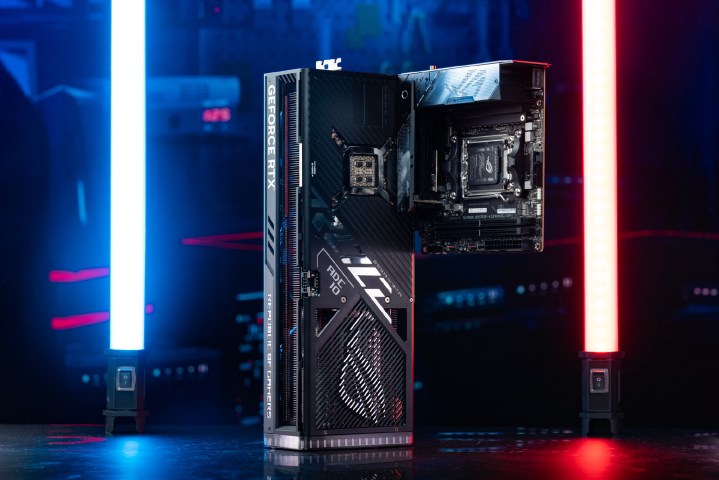Asus is taking advantage of its ROG Strix cooler design for RTX 40-series graphics cards, all the way down to the measly RTX 4060. Asus is turning what should be a compact, two-slot GPU into a 3.1-slot behemoth, matching the size of its already massive RTX 4090 Strix model.
In fairness to Asus, the RTX 4060 model is slightly smaller: 3.1 slots compared to 3.5 slots on the RTX 4090 version. Regardless, that’s a massive cooler for a relatively tame graphics card. This isn’t the recently released RTX 4060 Ti — though that one is getting the triple-slot treatment as well — but the upcoming RTX 4060, which is slated to launch in July.

The list price of the RTX 4060 is $300, but Asus will likely charge a premium for its ROG Strix design. Asus has two ROG Strix models available, both with the same cooler, but one comes factory overclocked. You can expect that design to run a little more expensive.
These are the only two RTX 4060 models Asus has announced, but there should be more on the way. The recently-launched RTX 4060 Ti has more compact designs available at list price, sporting a more manageable dual-fan design.
The RTX 4060 is a strange graphics card from Nvidia’s latest generation. Unlike the more expensive flagship designs we’ve seen, such as the RTX 4080, the RTX 4060 is actually cheaper than its previous-gen counterparts. It’s $50 cheaper than the RTX 2060 launched at and $30 cheaper than the RTX 3060.
It’s also trimmed down compared to the RTX 3060, sporting less VRAM and a thinner memory bus. Unlike the RTX 4060 Ti, it doesn’t come with a core reduction compared to the previous generation, which hopefully means it will stack up well and offer a solid value at around $300. That will be important, as the RTX 4060 Ti has recently come under fire for its disappointing generational improvements.
AMD has already rushed to fill this price point with its $270 RX 7600, which is a solid, if not exceptional, graphics card for 1080p gaming. The comparison between the RTX 4060 and RX 7600 will be an important one for budget-conscious gamers.
Intel’s Arc GPUs play an increasingly important role in this price range, as well. The Arc A750 and A770 weren’t standout graphics cards when they launched, but with minor generational improvements from AMD and Nvidia, combined with falling prices on Intel’s graphics cards, they’re looking like increasingly attractive options for 1080p.
The RTX 4060 is slated to launch in July, but Nvidia hasn’t shared an exact date yet. There won’t be a Founder’s Edition design, so third-party cards like the one Asus listed will be the only way to find the GPU. Alongside it, Nvidia is planning to release the $500 16GB RTX 4060 Ti, which matches the RTX 4060 Ti we have today but with a bump to VRAM.




